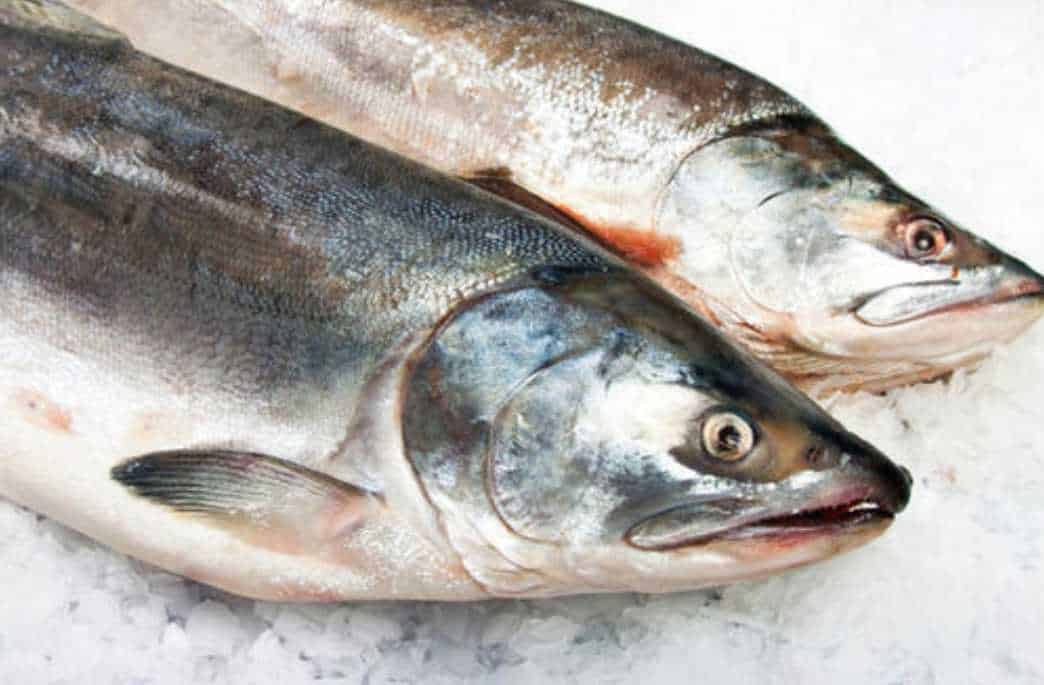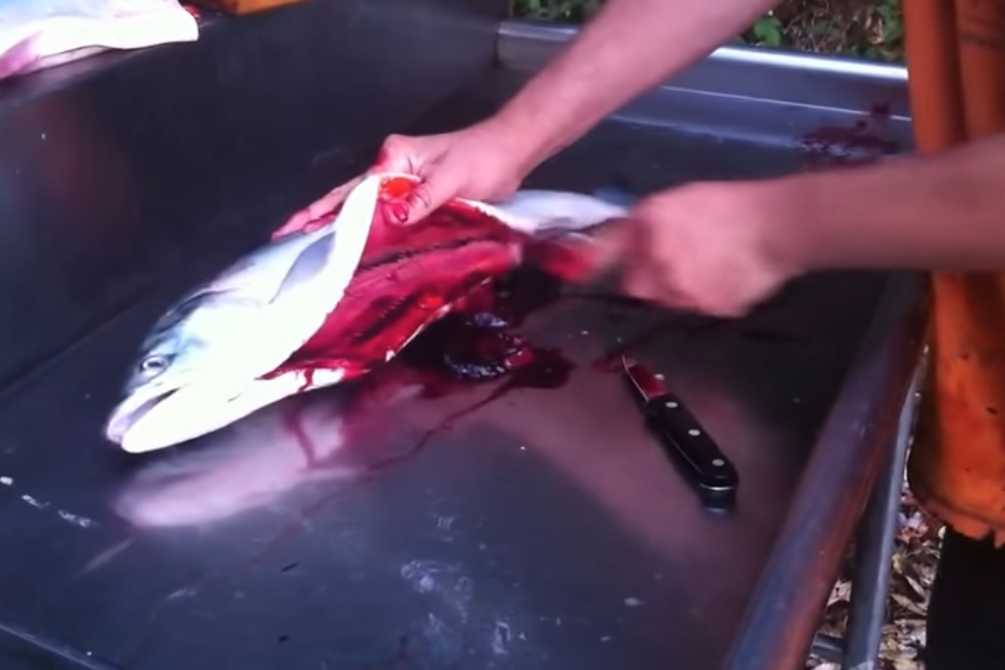Salmon is a favorite choice for raw sushi. Its fresh flavors and melt-in-your-mouth goodness makes it a favorite among sushi enthusiasts.
Consuming raw fish may have its risks, but you can prevent them by preparing them properly. Check out the following steps on how to prepare salmon for sushi.
How to Choose Salmon for Sushi
Salmon and other raw fish can harbor bacteria and parasites that can harm one’s health. The key to a safe raw salmon meal is choosing the freshest one. Here are the ways to know if the salmon you’re buying is fit for sushi.
What is sushi-grade salmon?
Sushi-grade salmon means that the fish was gutted and cleaned when the fishers caught it. Then, the fish is instantly frozen at the required temperature.
Buying from a trusted source means they are carrying real sushi-grade salmon. There are no official guidelines from any regulating body regarding sushi-grade fish. So the source must be truthful in their claims on the quality of its sushi.
What to Look for When Buying Salmon for Sushi
1. Start by going to a reputable and responsive seller
Suppose the seller is willing to answer your questions about the origins of the salmon. In that case, it’s a sign that they are not hiding anything. You may ask the seller the following questions to ensure you get the best sushi.
- Where was the fish caught?
- How did you store the fish?
- How long did you store it in the store?
- Did you fillet it yourself, or was it already delivered in fillet form?
2. Check out how the fish is handled
A responsible fish vendor cleans and sterilizes their knife and board before using them to slice the salmon. Using the same tools to prepare other non-sushi-grade seafood can cause cross-contamination.
A vendor’s attention to detail speaks volumes about the quality of the fish they’re selling.
3. Trust your senses
Your senses of smell, sight, and touch will come in handy when choosing the best salmon. Fresh salmon will always smell like the ocean and shouldn’t have any foul odor.
Its flesh must be firm to the touch. If it’s mushy or flaky, it’s not fresh anymore. Its appearance must be vibrant and should not have discoloration or dark spots.
How to Fillet Salmon for Sushi
Purchasing one whole salmon and filleting them at home may be safer. However, the process is challenging and time-consuming. If you want to practice your knife skills, you may follow these steps.
Step 1: Choose the freshest salmon in the market using the following guidelines
- The gills must be bright red.
- The eyes must be clear and protruding.
- The flesh is firm and clear while muscles are tight.
- The fish must smell like the ocean and not offensive.
- There should be no milky or slimy film on the fish’s exterior.
Step 2: Have the fish scaled and gutted
If you followed all the guidelines on choosing the best place to buy salmon, then asking them to gut and scale the fish won’t be a problem. These processes are pretty challenging, so it’s better to leave them to the experts.
Step 3: Wash your tools and work area
- It would be best to ensure that your tools and work area are clean and sanitized to prevent contamination. Wiping down your cutting board and work area with a bleach solution ( 15 ml bleach to 3.7 liters of water) will do the trick. Let the solution sit on the surface for 30 seconds before rinsing and wiping it dry.
- Sanitize the butcher knife and filet knife with a bleach solution for 10 minutes. Then, rinse with soap and water.
- Please wash your hands before you fillet the fish.
Step 4: Fillet the fish
- Lay the fish on your work surface and dry it by patting a paper towel on both sides.
- Insert a butcher knife on the spot behind its head. With a saw-like motion, cut along the spine until the end of the fish. Remember to tilt the blade slightly towards the backbone to get most of the meat.
- Lift the belly flap as you’re cutting to give you better access to the rest of the flesh.
- Place the first fillet on a clean plate. Then, proceed with the other side by doing the same steps.
- Discard the carcass or save it for fish stock.
Here’s a video for a more detailed look at fileting salmon.
How to Prepare Salmon for Sushi
Now that you have your fillets ready, it’s time to prepare them for sushi.
Step1: Prepare a fillet or salmon knife
While it is tempting to use any sharp knife, it’s best to use a fillet or salmon knife for a more precise cut. Remember to clean and sanitize the blade and the cutting board before using them again.
Step 2: Remove the rib bones from the salmon meat
- With a fillet knife, carefully slice between the flesh and the rib bones. Make sure that the knife is close to the ribs so you won’t be removing a big chunk of meat.
- Run your fingers along the salmon to check if any rib bones are left. Scrape the knife on the fish to see if you have missed any ribs.
Step 3: Remove the skin
You may or may not remove the salmon skin. If you want to eat it, here are the steps to take it off.
- Slice between the skin and the flesh using even strokes with a sawing motion.
- Make sure that the knife remains above the skin.
- Hold the skin gently while slicing until you’ve entirely removed it.
Step 4: Trim the Fat
Salmon belly fat is the part of the fish that’s lighter and fattier. You need to remove the fat when preparing sushi since its taste and texture are not meant to be eaten raw.
You may save it for soups and stews since it’s flavorful and nutritious when cooked. Use a salmon knife to trim the fat carefully. It’s usually found in the belly part and the fins’ spot.
Step 5: Remove the smaller bones
With tweezers, pull out any small bones on the fish’s flesh. Use your fingers to feel the end of the bone and lift them a bit, then use the tweezers to pull them out.
Step 6: Pat the salmon fillet dry with a paper towel
Transfer the salmon fillet to another work surface or cutting board.
Note: Skip Steps 2 to 4 if you have already bought ready-to-use salmon fillets.
Check out this video to see how to slice the salmon correctly.
How to Slice the Salmon for Sushi
- Use half the length of half a nori sheet to determine how long you’ll slice your sushi.
- Slice the chunk of fish in half and remove a thin layer on the darker part of the salmon.
- Cut the salmon according to your desired sushi recipe.
| Recipe | Description | Size | Process |
| Salmon Sushi Rolls | Thin and long pieces | ½ inch thick | 1. Cut the fillet in half.
2. Position the knife parallel to the longer edge of the salmon. 3. Slice the salmon based on the required measurement |
| Salmon Nigiri | Thinner and shorter pieces | ⅛ inch thick | 1. Position your knife at the end of the salmon fillet at a 45-degree angle.
2. Cut a thin slice using one smooth motion. 3. Avoid utilizing a sawing motion to preserve the firmness of the salmon. |
How to Freeze Salmon
Some sushi experts recommend letting the raw salmon “rest” in the refrigerator before using them for sushi. This step in preparing salmon aims to kill bacteria and some parasites in the fish.
Step 1: Wrap the fish
You may use aluminum foil, cling or saran wrap, or an airtight plastic container. However, vacuum sealing the fish is the best way to go.
Step 2: Label the sushi pack
It is critical to write the date on the sushi bag or container so you can keep track of how long it can stay in the freezer.
Step 3: Place the salmon inside the freezer
The FDA recommends freezing salmon before using it for sushi. The following are the guidelines set by the FDA for freezing and thawing.
- Freezing at -4 degrees Fahrenheit for seven days
- Freezing at -31 degrees Fahrenheit until totally frozen and keeping it at the same temperature for 15 hours
- Freezing at -31 degrees Fahrenheit until totally frozen and maintaining a -4 degree Fahrenheit temperature for 24 hours.
How to Defrost Salmon for Sushi
Defrosting the fish inside the refrigerator is the best and safest option. Don’t bring out the sushi from its packaging. Remove outer wrappers, if any, and leave the last layer.
Conclusion
Salmon sushi is a delectable dish that you can enjoy at home. Preparing yourself is a fun learning experience that can make the meal more exciting. Make sure you select the freshest salmon and read about how to prepare salmon for sushi.

Hiroshi Nakamura, a Tokyo-born sushi chef turned US-based writer and critic, is the voice behind ichisushi.com, blending traditional sushi wisdom with modern insights.








